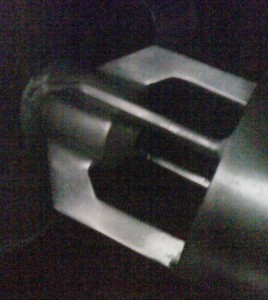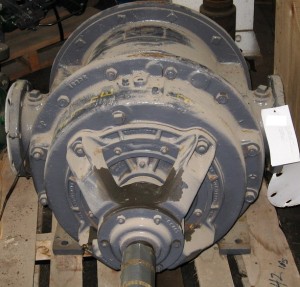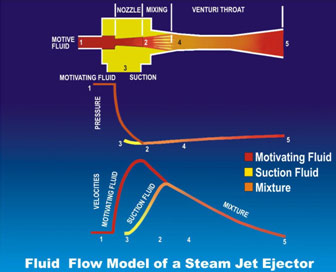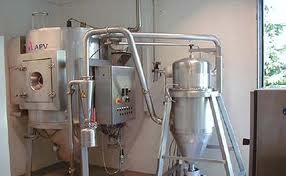What Would You Like to See Here? O Que Você Gostaria de Ver Aqui?
abr 04 Number of View :3311Eductor Pumps – The calculation / Edutores – Como Calcular
mar 24 Number of View :7380As written by Trevor Benjamin in this article to the World Pumps Magazine – 2001, the eductor pump, or “ejector”, is as old as the Greeks, but it is not so used as the centrifugal pump, with which it shares some performance features. Read more in this interesting article.
Click here to download the article
Clique aqui para fazer o “download” do artigo
Trevor Benjamin escreveu neste artigo para a revista World Pumps, que o edutor, ou “ejetor” é tão antigo quanto os próprios Gregos, mas não é tão utilizado quanto a bomba centrífuga, com quem reparte características de desempenho. Leia mais neste interessante artigo.
Performance Curve of a Nash H7 and H8 Vacuum Pump – Curva de Desempenho das Bombas de Vácuo Nash H7 e H8
mar 18 Number of View :6858Are you looking for the performance curve of the old Nash vacuum pumps models H7 and H8? Some of these old pumps are still running after more than 50 years. Here they are.
Click here to download the performance curves – H7-H8 vacuum pumps
Clique aqui para fazer o “download” das curvas – bombas de vácuo H7-H8
Você está procurando as curvas de desempenho das bombas de vácuo Nash H7 e H8? Algumas destas velhas bombas ainda estão em operação após mais de 50 anos. Aqui estão as curvas.
Vacuum Control for Steam Jet Vacuum Systems / Controle do Vácuo para Sistemas de Vácuo com Ejetores a Vapor
mar 11 Number of View :5064This is a technical paper from Wiegand , the TKI 21, that explains in detail how to effectively control the vacuum in a steam jet vacuum system.
Click here to download the TKI21
Clique aqui para abaixar o TKI21
Este é um documento técnico da Wiegand, o TKI 21, que explica em detalhe como fazer um controle efetivo do vácuo em sistemas de vácuo com ejetores a vapor.
How a Chiller Under Vacuum Works – Como Funciona um Resfriador sob Vácuo
mar 07 Number of View :4883Chillers under vacuum 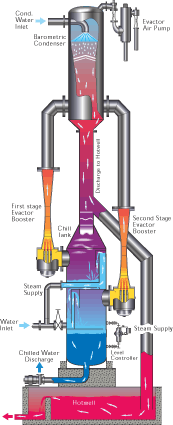 are widely used in the pulp and paper industry. I have already posted here an excellent article about troubleshooting and optimizing vacuum chiller. In this post you will see in detail how a two stage vacuum chiller works. This is an animation from Croll-Reynolds Co., Inc.
are widely used in the pulp and paper industry. I have already posted here an excellent article about troubleshooting and optimizing vacuum chiller. In this post you will see in detail how a two stage vacuum chiller works. This is an animation from Croll-Reynolds Co., Inc.
Os resfriadores sob vácuo são largamente utilizados na industria de papel e celulose. Eu já postei aqui um excelente artigo sobre localização de falhas e otimização de um resfriador sob vácuo. Nesta postagem você vai ver em detalhe como um resfriador de dois estágios sob vácuo funciona. Esta animação foi feita pela Croll-Reynolds Co., Inc.
First of all the pre-vacuum is started.
Primeiramente se liga o pré-vácuo.
When the desired project vacuum is reached, the cooling water to the main condenser is opened.
A água de resfriamento para o condensador é aberta quando o vácuo de projeto é atingido.
The main ejectors are brought into operation and the cooling cycle is complete. Here also the detail of the flash tank.
Os ejetores principais são colocados em funcionamento e o ciclo de resfriamento se completa. Aquitemos também um detalhe do tanque de “flash”.
In some places during the cold season the water inlet temperature to the chiller goes down and it is possible to operate with only one flash tank. One of the main ejectors is turned off.
Em alguns lugares onde a temperatura de entrada da água cai na época mais fria do ano, é possível se trabalhar somente com um tanque de “flash”. Normalmente não é o caso em locais quentes como no Brasil.
I hope you have enjoyed this post.
Espero que você tenha gostado.
How Ejector Works 2 – Como Funciona um Ejetor 2
mar 01 Number of View :31750One of my first posts was exctly about the principal of operation of a steam jet ejector. In that video from Nash we could see the movement of the two flows – the motive steam and the suction fluid . This simple animation from Transvac shows what is happening and also explains the process inside the ejector step by step. Click the Logo below to open the animation.
Uma das minha primeiras postagens foi justamente sobre o princípio de funcionamento de um ejetor de vapor. Naquela postagem o vídeo da Nash mostrava o movimento dos dois fluxos – do vapor motriz e do fluido sendo aspirado. Esta animação da Transvac mostra o que está acontecendo dentro do ejetor e também explica o processo passo a passo. Clique no Logotipo acima para ver a animação.
Dryer Handbook – Manual do Secador
fev 16 Number of View :4012If you have enjoyed the APV Evaporator Handbook, you will like this one also. It is the APV Dryer Handbook. Click here to download it.
Se você gostou do Manual do Evaporador da APV, vai gostar deste aqui também. É o Manual do Secador da APV. Clique aqui para abaixar o manual.
U.S Standard Atmosphere Calculator – Calculadora de Atmosfera Padrão
fev 15 Number of View :11479Most of the times a missing information, when we design a vacuum system – liquid ring pump or steam jet ejectors, is the atmospheric pressure at the site of the installation. With the help of this tiny program we can have this information and much more, and all we need to know the altitude of the site. This program is based in the U.S Standard Atmosphere – 1976. Click the picture below to open the calculator.
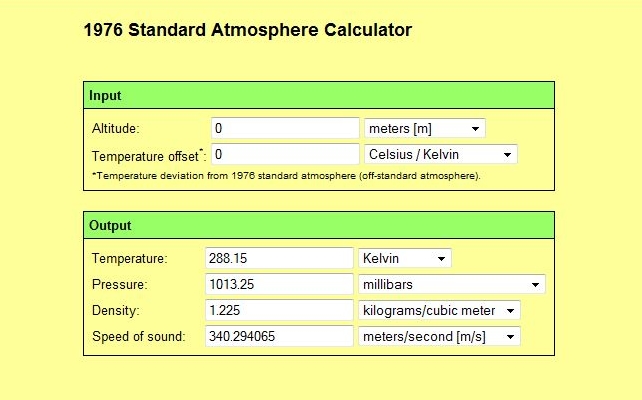 Quase sempre quando projetamos um sistema de vácuo – bomba de vácuo de anel líquido ou ejetores a vapor – a pressão atmosférica no local da instalação não é conhecida ou não é informada. Com a ajuda deste pequeno programa nós podemos ter essa informação e muito mais, e tudo o que precisamos saber é a altitude do local. Este programa é baseado no U.S Standard Atmosphere – 1976. Clique na imagem acima para abrir a calculadora.
Quase sempre quando projetamos um sistema de vácuo – bomba de vácuo de anel líquido ou ejetores a vapor – a pressão atmosférica no local da instalação não é conhecida ou não é informada. Com a ajuda deste pequeno programa nós podemos ter essa informação e muito mais, e tudo o que precisamos saber é a altitude do local. Este programa é baseado no U.S Standard Atmosphere – 1976. Clique na imagem acima para abrir a calculadora.

